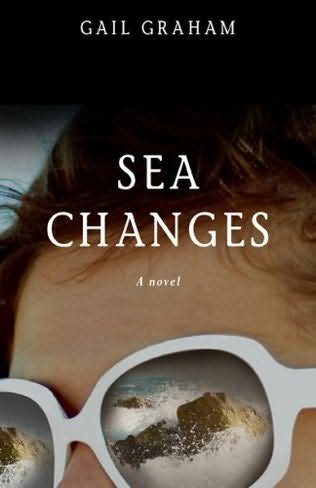 Finally. In the past on this site, there’s been discussion about the overall direction of self-publishing, with some seeing it mainly as an avenue for mainstream writers who weren’t able to make the cut in the traditional system. I’ve seen self-publishing as a route for more-unique writing that wasn’t able to find a home in a publishing industry that doesn’t exactly reward innovation. For the new paradigm in publishing to take effect, not only will niche writers have a platform with self-publishing, but everybody: including literary fiction.
Finally. In the past on this site, there’s been discussion about the overall direction of self-publishing, with some seeing it mainly as an avenue for mainstream writers who weren’t able to make the cut in the traditional system. I’ve seen self-publishing as a route for more-unique writing that wasn’t able to find a home in a publishing industry that doesn’t exactly reward innovation. For the new paradigm in publishing to take effect, not only will niche writers have a platform with self-publishing, but everybody: including literary fiction.
But sometimes I think I’m fooling myself because the majority of the books that come to this site are mainstream-oriented. Now, I’m not saying these books aren’t worthwhile – it’s a great development if commercial writing is able to be successful via self-publishing as well. But it’s not where my heart lies, and it’s not what I think will help self-publishing be taken seriously overall. It’s when more serious literary fiction comes out of the realm of self-publishing that the new paradigm will spring fully into gear.
That’s a long way of saying how pleased I was to receive the novel Sea Changes by Gail Graham. This is great literary writing, while at the same time unsurprising that it might find difficulty. It shouldn’t be unsurprising, but in this publishing environment, it is. The novel weaves between the realistic and the fantastic. It is about a woman, Sarah, who has recently lost her husband. During a suicide attempt in the Australian ocean she is taken to an undersea world by a young girl, where she is deemed a “vestigant,” a person who can travel between the sea and land. Sarah is left wondering if the experience was a dream or real, so the book meditates on the nature of reality, as well as being a meditation on how people deal with loss.
The novel is movingly written. From page 71:
The sky is a dusky yellow when Sarah awakens, the sun is about to rise. Lingering beneath the cozy quilt, she watches the incoming tide of light upon the ceiling, listens to the ebb and flow of street sounds beyond the open window.
She’s here, not there. This is real. The other was a dream. Sometimes you can go back to sleep, though, back into the dream. Closing her eyes, she summons up images of Xaxanader and Bantryd, her imagination painting in a background of swirling color. For a moment it seems to be working, but then there’s the thud of metal upon metal in the street outside, car horns, angry male voices. It’s no good. Wearily, Sarah opens her eyes.
The title Sea Changes is appropriate, not just for the plot elements, but for how the writing unfolds. The novel flows deftly from one scene to another, in a way like classical music, which moves seamlessly from one sequence to another. As the novel progresses, and Sarah ends up having to choose between the real and the fantastic undersea world, it’s a page-turner as well. If there’s a criticism, it’s that in some passages, the book comments on what it’s like to live Australia, as written for an American audience – I’m not sure how interesting these details would be to Australians themselves: “There’s nothing much in the newspaper. There rarely is. It’s Australia, only eighteen million people in the whole country.”
Ideally, this book should have no problem finding a publisher. But it is this type of book that weaves together different genres that may have editors talking about its marketability. This is not science fiction in the way that Doris Lessing’s Shikasta series is science fiction, but it certainly has science fiction elements. And perhaps because it is both science fiction and literary fiction that publishers would scratch their heads: and that is what is wrong with traditional publishing.
In addition to being a skilled writer, Gail Graham is also highly credentialed. On the back of the book, it says, “Gail Graham is the author of six books published in the United States and Australia…Her novel Crossfire has been translated into French, German, Norwegian, Swedish, and Danish and was awarded one of Germany’s most prestigious literary prizes, the Buxtehude Bulle. Three of her books were New York Times Book of the Year recommendations.” I asked her why someone with so much experience and such a strong book was compelled to self-publish. She replied:
Having carefully researched publishing houses to find the ones most likely to be receptive to an unusual novel like Sea Changes, my agent began her pitch to what she felt were the twenty most likely editors in late 2008, just as the stock market crashed and the economy went down the toilet.
Editors were losing their jobs and nobody was taking chances on anything – especially not on a novel that was “different.”
So rather than continue getting rejections, my agent felt I should put it aside for a couple of years and then try again. That would make sense if I was young. But I’m not young. I’m 68 years old, and I truly believe that Sea Changes is the best thing I’ve ever written.
I wanted to get it out there. I wanted this book to find its readers. I wanted to do signings and readings, and talk to book discussion groups. And I wanted all these things to happen while I’m still fit and well enough to enjoy them.
People seem to be liking Sea Changes. Who knows? Maybe it’ll get picked up by a mainstream publisher. Anything is possible.
By all accounts, it’s been a good move for her, as the book is selling well and she’s having many author appearances and interviews:
In July, Gail will travel throughout California, visiting bookstores, libraries and reading groups in San Diego, Pasadena, Bakersfield, Fresno, San Francisco, Santa Cruz, Santa Barbara, Santa Monica and La Jolla.
This is no doubt easier for someone with her track record, but it’s a good precedent.
Frankly, I’m glad she self-published, no matter the disappointment with traditional publishing’s failings. Because she shows that this is an avenue for any and all writers. If you want to read an enormously inventive and well-crafted novel, you won’t find a better example than Sea Changes released by any publisher. For anyone who denigrates self-publishing, you need only to hold up a book like this one, which lifts up the entire field.
Get an Editorial Review | Get Amazon Sales & Reviews | Get Edited | Publish Your Book | Enter the SPR Book Awards | Other Marketing Services






















What a great find, Henry. Can’t wait to read it.
P.S. There’s plenty of interesting stuff in Aussie newspapers!
http://www.theaustralian.news.com.au
http://www.smh.com.au
I’m with you, Henry — glad to see literary work being self-published, and done professionally. I really relate to what she said about being too old to wait for traditional publishers. That’s one of my reasons (although I’m younger – 56) for self-publishing my story collection (also not an easily pigeonholed book), which will be available in a few weeks.
Also wanted to say I appreciate the balance you’ve brought to this whole discussion on why we self-publish. You’re an advocate of this revolution for all the right reasons, IMHO.
Very impressive indeed!
My science fiction book has been recently published in the US through more traditional means but I have a second manuscript which I am considering taking down the self publishing path.
The link to my authors site is: http://www.StrategicBookPublishing.com/ScienceFictionandAlternateHistory.html
At a mere 60 I am greatly encourage by Gail’s experience. Good luck to her.
Cheers
Speaking of Aussie newspapers, I know this is a little off-topic but you might be interested to know that for the first time ever a BLOGGER has won the Pascall Prize, Australia’s $15,000 national prize for excellence arts journalism.
Her name is Alison Croggon and this is her blog: http://theatrenotes.blogspot.com/
News articles on the win:
http://www.theaustralian.news.com.au/story/0,25197,25524900-16947,00.html
http://www.theage.com.au/news/entertainment/arts/blogger-first-to-take-prize/2009/05/22/1242498921033.html
Nice post, Henry. Thank you for pointing us to this book – it looks lovely, and I like the cover! It just goes to show that if you understand what you are doing – or if you have trusted professionals to guide you – self-publishing can be a good choice for many authors.